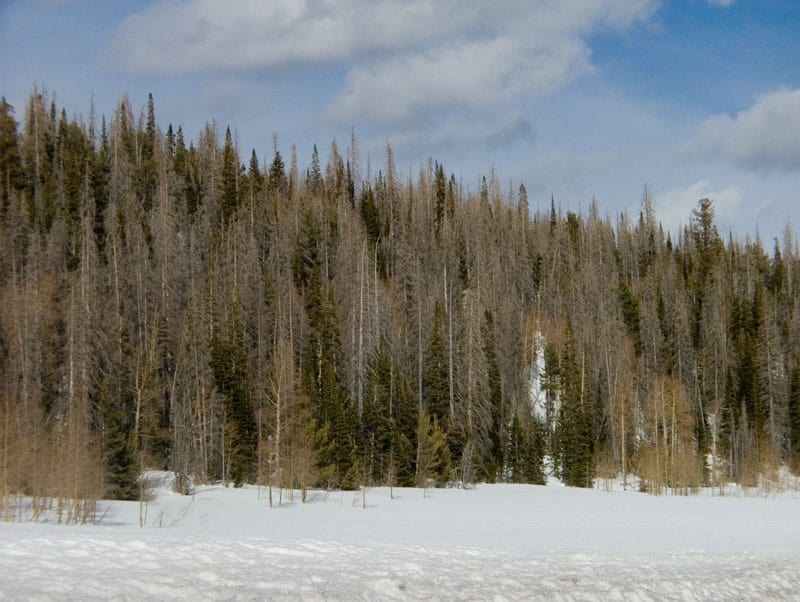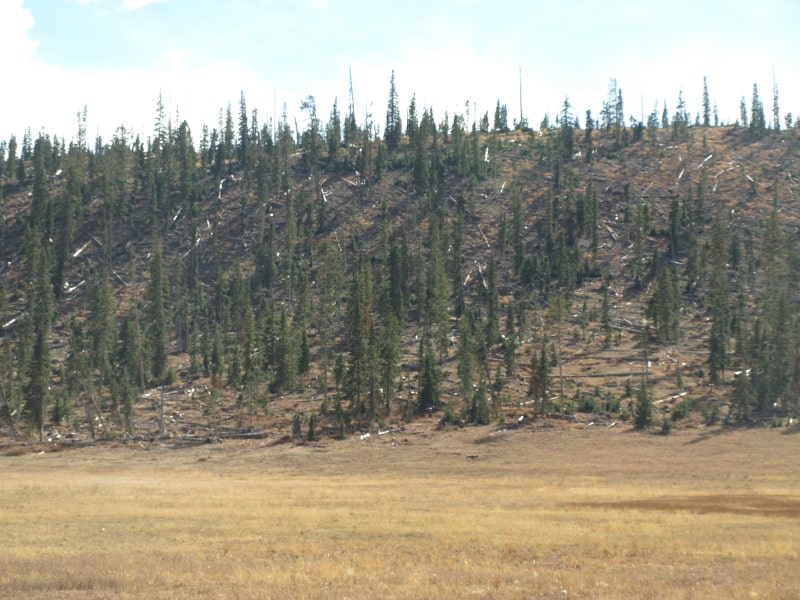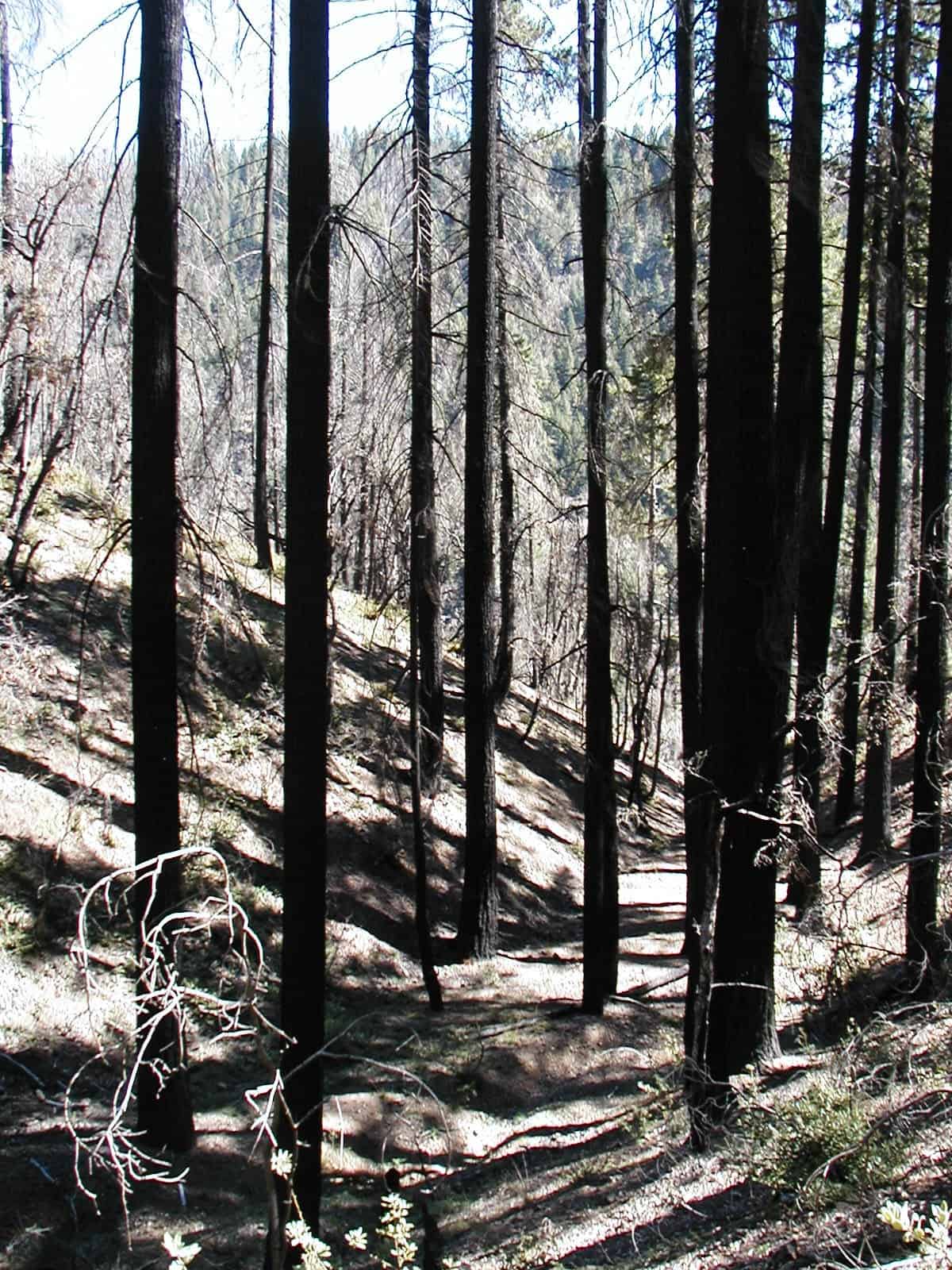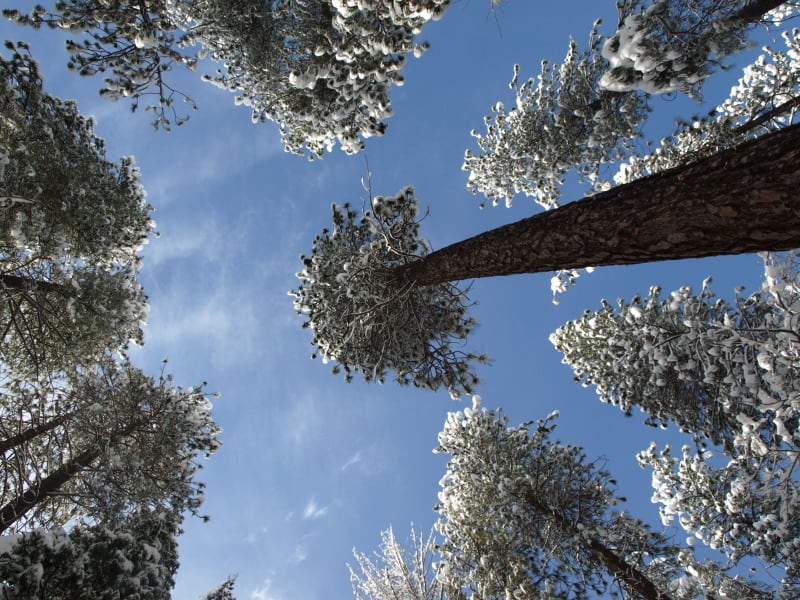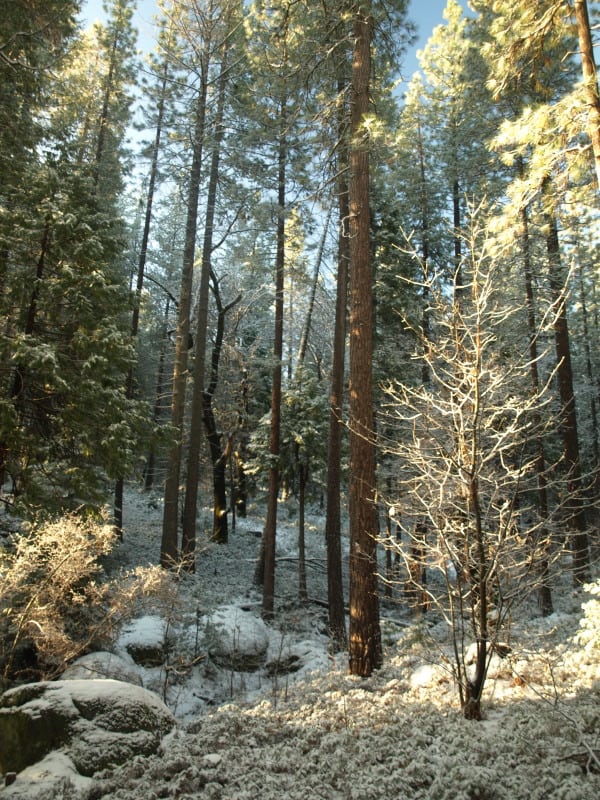The Forest Service’s Institute of Forest Genetics, in Placerville, California, has announced an important development to provide future nest trees, for imperiled birds on the Endangered Species List. Dr. Marie Shelley says that a twelve year effort has produced sapling trees, which exhibit the branching characteristics needed by birds, for nest trees which protect their young from predators like the Great Grey Owl. After eight years of finding seed trees, and cone collecting, the Forest Service’s Placerville Nursery is now producing saplings that will grow into the limby, short trees that nesting birds prefer. The efforts have been met with opposition from anti-GMO groups, claiming that such “experiments” could lead to “Frankenstein Forests”, breeding with the native species and putting forests at unacceptable risk. Dr. Shelley says that those genetics already naturally exist, and there is simply no danger to current gene pools.
The Forest Service has provided this picture of their first “Mother Tree”, found on the Black Hills National Forest, showing the increased branch growth that foresters have always called “Wolfy Trees”. Often, in the past, these trees were cut down and left in the forests, without any commercial value. The revolution in forest science during the 90’s has led to using such trees as “Wildlife Trees”, considered a much better use of these kinds of trees. Researchers say that these “Wolfy Trees” have accelerated growth rates, if they have open sun. The Black Hills National Forest has implemented the pilot program and is now interplanting their site-specific special trees in areas impacted by bark beetles and wildfires.

